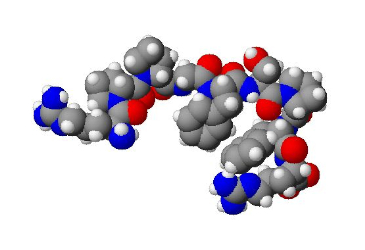- Series:Humans, Transcript English
Despite modern medical advancements, pain management remains a difficult problem today. Man has used various forms of aspirin to manage pain for thousands of years. While more potent drugs can be used today, our primary approach to pain has changed little over the millennia. Recent advancements now promise to show us how to deal directly with many forms of pain.

Let’s say that you accidentally get a paper cut. The pain produced by a paper cut is always way out of proportion to the actual injury. Medical researchers tell us that the injured tissue creates a chemical called bradykinin. Bradykinin is the most potent pain-producing substance known. Bradykinin has a greater purpose than simply making your paper cut miserable. Bradykinin sets off a complex chain of chemical reactions that are important in healing your wound. In the process, bradykinin also links to nerve cells, causing them to send pain messages to your brain.
Scientists have begun to develop bradykinin blockers. These chemicals are designed to bind to the nerve cells in place of the bradykinin, preventing bradykinin from sending pain messages. As a result, pain is blocked at the source.
Pain is a reality in our world because of sin. It not only warns us of injury but it reminds us of the ultimate consequences of sin. But thanks be to God, who sent His Son, Jesus Christ, to bear the pain of our disobedience on the cross so that we might have the forgiveness of sins!
Revelation 21:4
“And God shall wipe away all tears from their eyes; and there shall be no more death, neither sorrow, nor crying, neither shall there be any more pain: for the former things are passed away.”
Prayer: Thank You, Father, for loving me so much that You sent Your beloved Son to suffer the penalties of my sin. Help me to always seek my assurance of Your acceptance in what Jesus has done for me. Amen.
Notes: McKean, Kevin. “Pain.” Discover, October, 1986. P. 82-92. Illustration: Brandykinin (PD)
© 2024 Creation Moments. All rights reserved.
